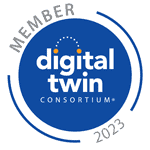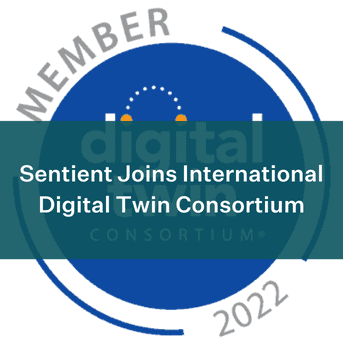 Creating and marketing Digital Twins to the industry is a challenging task, not least because Digital Twin tends to mean different things to different people. In this article, we will discuss the challenges of marketing and creating Digital twins for Industry.
Creating and marketing Digital Twins to the industry is a challenging task, not least because Digital Twin tends to mean different things to different people. In this article, we will discuss the challenges of marketing and creating Digital twins for Industry.
Digital Twins – A Perfect Copy
The generally agreed-upon definition for a Digital Twin is a perfect virtual copy of a physical object (asset or system) that looks and responds to stimuli precisely as the real object would. The concept is that actions can be performed using the virtual copy of the object that would be expensive or unsafe to perform on the physical asset. Creating the perfect twin is still unapproachably complex for now, so instead a Digital Twin provider can deliver a solution that provides a slice (or two) of the full feature set.
There are multiple things to consider when it comes to marketing and creating Digital Twins:
- The industry is now quite far in its journey towards digitisation.
- Assets now generate a lot of data, and many businesses have large volumes of data to manage.
- Data is delivered in many forms and at a variety of velocities.
- Each data point alone adds limited value.
- A Digital Twin contextualises data from a variety of sources and allows for elevated decision-making, reducing operating costs and providing the potential for complex optimisation.
- For a Digital Twin to deliver true value, it needs to be accessible to decision-makers.
- InDI provides data contextualisation and aggregation from a variety of source systems and provides both a 2D and 3D viewport for interrogating that data.
- It is easy to use and greatly reduces time spent hunting for information.
- It does not aim to solve every use case of a Digital Twin, but to be an important part of a vibrant ecosystem of technology solutions that customers can integrate with other solutions.
Digital Twins for Operators
From the Operator’s perspective, most organisations fall somewhere on the extremities of the continuum between caution and ambition. At the cautious extreme, we find many organisations that understandably view a Digital Twin as a monolithic and expensive task, which they feel unready to approach. On the other extreme, are bold organisations with highly ambitious and detailed work scopes that roadmap a Digital Twin that will take considerable cost and time to stand up.
It is the responsibility of Sentient and our many excellent competitors and collaborators to promote the agile, incrementalist approach to creating a Digital Twin. To de-risk the endeavour of building a digital twin for cautious organisations, and to provide an alternative pathway to the fully scoped mega-app.
By attacking the problem incrementally, organisations experience better access to information and better decision-making potential from very early in the Digital Twin journey. As the scope of a full Digital Twin is vast, each Operator may choose a different entry point based on their current state and their core business challenges – and the timing has never been better for addressing these business challenges in Australia.
We are fortunate to have come across a rich ecosystem of local technology providers who are assessing different aspects of the Digital Twin solution. Companies like DIGATEX use AI/ML techniques to facilitate the digital transformation process and to provide automated data extraction, classification, and contextualisation. Companies like XMPro provide a no-code tool for extracting, transforming, and analysing data.
With InDI, Sentient specialises in providing an interactive 3D virtual copy of an asset and contextualising all of a company’s data sources for simple human interfacing. InDI is more than just a pretty face for your asset. It is currently in production at Tier-1 resource companies in Western Australia, helping hundreds of users at each company to plan and execute their work more safely and efficiently. Each of these companies has different business challenges to address and has put InDI to work solving these challenges.
Sentient has provided these customers:
-
Improved Capacity for Remote Work – By being able to access site information, live, from anywhere, InDI has reduced site tourism for each of our customers.
-
Access to Information – InDI has greatly improved the ease with which our customers access the valuable data that their assets are creating.
-
Training and Onboarding – InDI has been used to provide onboarding and training for staff before they go to a site, and to conduct training exercises in the virtual environment without exposing personnel to high-risk scenarios, or requiring costly interruptions to operations.
-
Communication and Collaboration – All of our customers now work with teams based in multiple locations. Sometimes this is a matter of site and office-based teams, in other instances our customers have a center of excellence supporting operations from an entirely different country. In each case, InDI has provided these teams with an unprecedented ability to understand problems spatially and to effectively communicate solutions with teams working in another location
-
Better decision-making – All of the above points significantly improve the organisation’s ability to make better decisions faster. This ability is a key enabler for business sustainability and resilience.
 As the business needs of our customers shift and develop, so too does InDI. But at Sentient we believe that the true value for business comes from fostering an ecosystem of technical excellence rather than going it alone. By focusing on 3D data visualisation and human interface, Sentient is able to offer a lightweight, feature-rich, best-in-class product that enables companies to build increasingly intelligent solutions.
As the business needs of our customers shift and develop, so too does InDI. But at Sentient we believe that the true value for business comes from fostering an ecosystem of technical excellence rather than going it alone. By focusing on 3D data visualisation and human interface, Sentient is able to offer a lightweight, feature-rich, best-in-class product that enables companies to build increasingly intelligent solutions.
Talk to Sentient Computing, a proud member of the Digital Twin Consurtion today, to see how we can assist you on your Digital Twin (InDI) journey.






